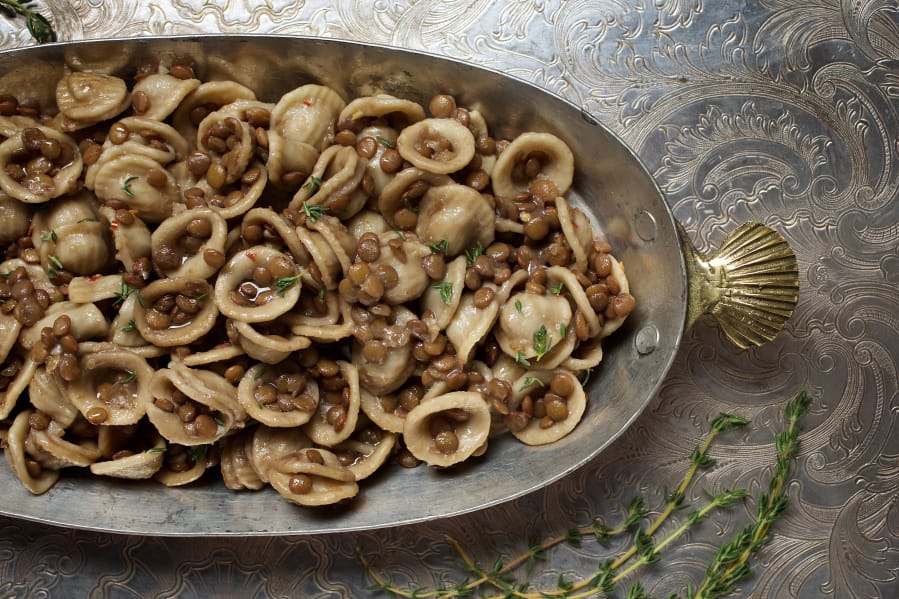At least once a week, someone in our household puts a small Dutch oven on the stove and covers the bottom with a heap of lentils. We go through this exercise so often that the steps — simmering aromatics and oil in a simple broth, adding pasta to cook until it just yields to the teeth — have become methodical. It’s a soup, but only barely a soup: The pasta wears the broth like a sauce. By the time we ladle it into bowls, we are already grateful.
We are also late to the party. This understated combination of pasta and lentils, or pasta e lenticchie, has been a staple of kitchens throughout Italy for centuries, prepared in variation according to regional and personal tendencies. It is part of a vast repertoire of thick, hearty, pasta-based minestre, or soups, in which legumes (chickpeas, favas, cannellini, lentils and borlotti are among the most common) and other starchy vegetables (potatoes, winter squash) figure prominently.
“If you mention pasta e patate to an Italian, any Italian, it’s like Proust and his madeleines,” said Maureen Fant, co-author with Oretta Zanini de Vita of “Sauces & Shapes: Pasta the Italian Way” (W.W. Norton, 2013).
The English translation for minestra is imperfect. In “Sauces & Shapes,” Fant writes, “The line between pastasciutta, pasta dressed with a sauce, and zuppa or minestra, soup, is not straight. Sometimes a cup or two of water, added or boiled away, is all it takes to turn one into the other.”



